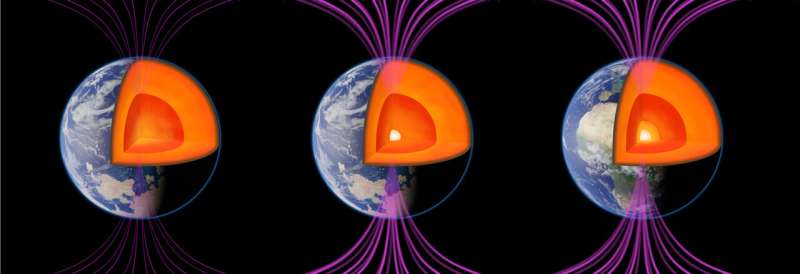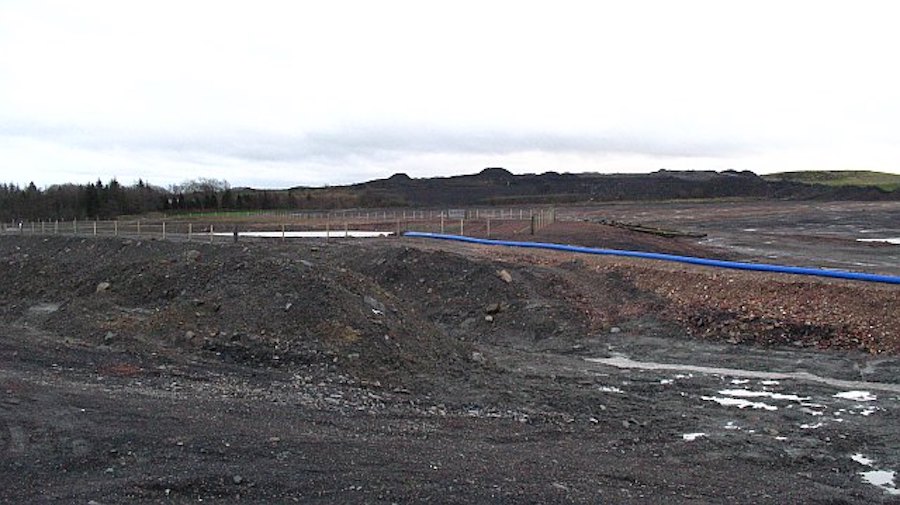Mining
Tuesday, August 2nd, 2022 6:06 am EDT
In a paper published in the journal Nature Communications, the Rochester scientists explain that about 565 million years ago, the magnetic field’s strength decreased to 10% of its strength today. Then, mysteriously, the field bounced back, regaining its strength just before the Cambrian explosion of multicellular life on earth.
Such rejuvenation happened within a few tens of millions of years, which is quite rapid on geological timescales, and coincided with the formation of earth’s solid inner core, suggesting that the core is likely a direct cause.
“The inner core is tremendously important,” John Tarduno, co-author of the study, said in a media statement. “Right before the inner core started to grow, the magnetic field was at the point of collapse, but as soon as the inner core started to grow, the field was regenerated.”
Tarduno explained that earth’s magnetic field is generated in its outer core, where swirling liquid iron causes electric currents, driving a phenomenon called the geodynamo that produces the magnetic field.
Because of the magnetic field’s relationship to earth’s core, scientists have been trying for decades to determine how earth’s magnetic field and core have changed throughout our planet’s history. They cannot directly measure the magnetic field due to the location and extreme temperatures of materials in the core. Fortunately, minerals that rise to the surface contain tiny magnetic particles that lock in the direction and intensity of the magnetic field when the minerals cool from their molten state.

To better constrain the age and growth of the inner core, Tarduno and his team used a CO2 laser and a superconducting quantum interference device (SQUID) magnetometer to analyze feldspar crystals from the rock anorthosite. These crystals have minute magnetic needles within them that are considered perfect magnetic recorders.
By studying the magnetism locked in ancient crystals—a field known as paleomagnetism—the researchers determined two new important dates in the history of the inner core.
The first date is 550 million years ago, the time at which the magnetic field began to renew rapidly after a near collapse 15 million years before that. The researchers attribute the rapid renewal of the magnetic field to the formation of a solid inner core that recharged the molten outer core and restored the magnetic field’s strength.
The second date is 450 million years ago, the time at which the growing inner core’s structure changed, marking the boundary between the innermost and outermost inner core. These changes in the inner core coincide with changes around the same time in the structure of the overlying mantel, due to plate tectonics on the surface.
“Because we constrained the inner core’s age more accurately, we could explore the fact that the present-day inner core is actually composed of two parts,” Tarduno said. “Plate tectonic movements on earth’s surface indirectly affected the inner core, and the history of these movements is imprinted deep within earth in the inner core’s structure.”
For the scientist, a better understanding of the dynamics and growth of the inner core and the magnetic field has important implications, not only in uncovering the earth’s past and predicting its future but in unravelling the ways in which other planets might form magnetic shields and sustain the conditions necessary to harbour life.
Researchers believe that Mars, for example, once had a magnetic field, but the field dissipated, leaving the planet vulnerable to solar wind and the surface without oceans. While it is unclear whether the absence of a magnetic field would have caused earth to meet the same fate, Tarduno said that the blue planet would have lost much more water if its magnetic field had not been regenerated.
“The planet would be much drier and very different than the planet today,” he pointed out.
This post has been syndicated from a third-party source. View the original article here.




